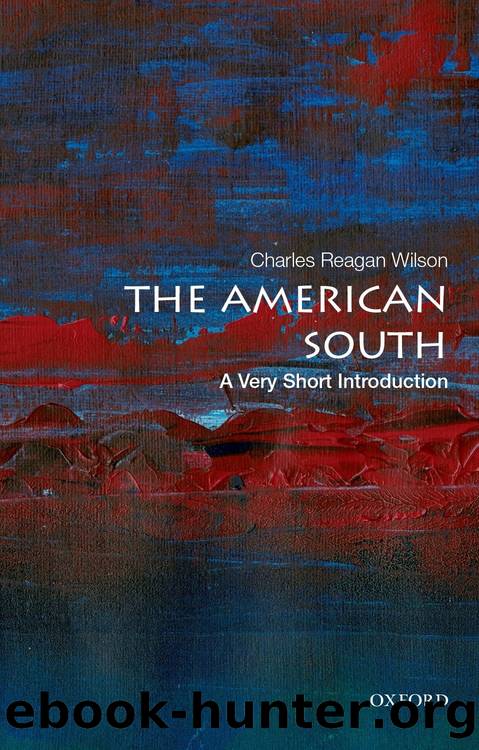The American South by Charles Reagan Wilson

Author:Charles Reagan Wilson [Wilson, Charles Reagan]
Language: eng
Format: epub
ISBN: 9780199943579
Publisher: Oxford University Press
Published: 2020-10-30T00:00:00+00:00
7. Ku Klux Klan members marched in a parade in Montgomery, Alabama, in December 1967, carrying American and Confederate flags. The Klan reappeared in the 1950s in response to the civil rights movement and often displayed the Confederate battle flag as a symbol of white supremacy.
The battle of Birmingham was a dramatic and bloody event that nonetheless marked the movementâs progress. In 1962, Alabama elected as governor George Wallace, a fiery populist committed to opposing integration. Wallace defied a court order in resisting integration of the University of Alabama and worked with political allies in Birmingham to frustrate the SCLC campaign that began in April 1963. The city had a long history of violent resistance to civil rights efforts, earning it the name of âBombingham.â Its political disorganization and lack of civic leadership on civil rights left default control to Eugene âBullâ Connor, the pugnacious police commissioner. The SCLC took a risk and recruited elementary and high school students to take part in the demonstrations. They were met by fire hoses and police dogs that created chaotic and violent scenes that network television broadcast nationwide and newspapers headlined around the world. The city reached an agreement that gave the SCLC enough concessions to mark a victory. The violence continued as segregationists killed four young girls attending Sunday school during a bombing at the Sixteenth Street Baptist Church in September 1963.
Leaders of the civil rights movement had, nonetheless, regained momentum after Birmingham, reinforced by a new commitment by President John F. Kennedy to support national civil rights legislation. In June 1963, Kennedy addressed the nation, insisting that âwe are confronted with a moral issue ⦠as old as the Scriptures and as clear as the American constitution.â The emotional high point of the civil rights movement came in August 1963 when the various organizations of the movement sponsored a march on Washington to support that legislation. King delivered his inspirational âI Have a Dreamâ speech, calling the nation back to the long-held American dream of freedom and opportunity.
The assassination of President Kennedy in November 1963 brought Vice President Lyndon B. Johnson to the presidency, and Johnson surprised many observers with his fervent championing of civil rights legislation. Johnson had grown up in poor rural country in central Texas and became a fervent New Deal congressman. He brought a tepid record on support of civil rights legislation to his presidency, but his conversion to the cause while president and his powerful legislative skills garnered bipartisan support for the Civil Rights Act of 1964. The law made discrimination in education, public accommodations, voting, employment, and housing illegal. Johnson pushed for legislation to assist those in need, including the War on Poverty, Head Start, federal school breakfast programs, Medicare, housing projects, and the Job Corpsârepresenting together an ambitious and far-sighted Great Society that was worthy of its New Deal ancestry. Many of these programs had special impact in the South, beset still by disproportionate social problems and economic inequalities compared to the rest of the nation.
Download
This site does not store any files on its server. We only index and link to content provided by other sites. Please contact the content providers to delete copyright contents if any and email us, we'll remove relevant links or contents immediately.
The European Opportunity by Felipe Fernández-Armesto(562)
The European History Highway: A Guide to Internet Resources by Dennis A. Trinkle Scott A. Merriman(514)
The Seven Wonders of the Ancient World by Michael Denis Higgins(503)
European Security in a Global Context by Thierry Tardy(494)
European Security without the Soviet Union by Stuart Croft Phil Williams(488)
The Routledge companion to Christian ethics by D. Stephen Long Rebekah L. Miles(485)
Hyperculture by Byung-Chul Han(455)
Get Real with Storytime by Julie Dietzel-Glair & Marianne Crandall Follis(422)
Hudud Al-'Alam 'The Regions of the World' - a Persian Geography 372 A.H. (982 AD) by V. V. Minorsky & C. E. Bosworth(421)
Gorbachev And His Generals by William C. Green(410)
Tibetan Studies in Comparative Perspective by Chih-yu Shih Yu-Wen Chen(406)
Governance, Growth and Global Leadership by Espen Moe(401)
CliffsNotes on Fitzgerald's The Great Gatsby by Kate Maurer(382)
How Languages Are Learned 5th Edition by Patsy M Lightbown;Nina Spada; & Nina Spada(376)
The Oxford History of the World by Fernández-Armesto Felipe;(373)
The Egyptian Economy, 1952-2000 by Khalid Ikram(370)
Oral Poetry and Narratives from Central Arabia: The Poetry of Ad-Dindan : A Bedouin Bard in Southern Najd (Studies in Arabic Literature, Vol 17) (English and Arabic Edition) by P. M. Kupershoek P. Marcel Kurpershoek(356)
The Oxford Handbook of the Incas by Sonia Alconini(351)
Europe Contested by Harold James(337)
